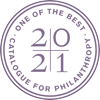Click here to download this prospectus.
Deadline: Ongoing
Submission Fee: Free
Type of Call: We are seeking anyone with a strong curatorial point of view and an idea for an exhibition revolving around themes of social activism and community healing.
Eligibility: This is open to anyone with a strong curatorial point of view and an idea for an exhibition that will inspire community dialogue and perhaps even socially conscious change. Artists, curators, social workers, collectives, writers, educators, students, etc., are welcome to submit their proposals.
Notification: All submissions will be filed and reviewed quarterly based on our fiscal year. All exhibitions are planned 1 to 2 years in advance of their showing at the gallery; if we select your proposal we will notify you and invite you to collaborate with the gallery. Thank you for your patience and understanding regarding this process.
Questions & Submission Contact: For all questions please email Spencer Dormitzer, Gallery Director, at the Joan Hisaoka Healing Arts Gallery at spencer@smithcenter.org.
Exhibition Goals & Sample Successful Curatorial Models
Though it is often perceived that our gallery only shows the artwork of those affected by cancer or about illness, the gallery operates on themes of creativity and healing in many facets. Based on the belief that art can mend social, psychological, and physical ills by building community, inspiring change, and celebrating life, our exhibitions explore healing beyond just the physical. Past successful curatorial themes have encouraged community healing and inspired activists dialogue by highlighting significant societal issues, such as gender and racial identity, social injustice, LGBT equality, war and conflict, and environmentalism. We address these themes positively to demonstrate that the arts enlighten and empower us to change our perceptions and cultivate healing in our communities.
We also aim for collaboration, both between varying types of artists and between artists and their patrons. Many of our shows feature this form of collaboration by either incorporating other forms of art (dance, music, film, etc.,) in line with the exhibition, or by offering hands-on workshops with exhibition artists. These experiences also foster community healing by facilitating friendship and collusion.
*Please note that as a non-profit gallery, our proceeds go towards sustaining collaborative cancer work of the Smith Center for Healing and the Arts. As a result, we ask that the exhibited art be available for sale.
Some model examples of past exhibitions and supportive programming include the following and are more in line with the curatorial proposals we are seeking:
- Art @ Work: In partnership with Albus Cavus, this exhibition used graffiti-style mural art to bring Washington, DC residents together in beautifying their neighborhoods, and featured three interactive workshops with graffiti artists in which visitors created a public art piece.
- The Real Story of Superheroes: Photographs by Dulce Pinzon highlighted Latino immigrants as “superheroes,” raising questions of American heroism and the role of immigrant labor in the workforce.
- Reality Confront End: This collaborative exhibition discussed the nature of loss and healing and featured a collaborative choreography work by the renowed dancers from Bosma Dance.
- Sisters of Perpetual Indulgence: Identity Writ Large: Comprised of juxtaposed photographs of the eponymous social activist group, this show addressed their use of drag to increase awareness of the LGBT community, AIDS education, and human rights.
- Against the Bias: Artworks created by crocheting, sewing, knitting, quilting, and other fabric materials demonstrated the historically undervalued artistry of a craft typically attributed to women. This exhibit included a community-created “yarn-bombing” of the Smith Center facade, as well as a crochet tutorial and holiday craft workshop.
Further information on or examples of past shows can be found at the gallery archive.
Guidelines
In order for your submission to be considered, all materials should be saved as one PDF file – please compile the following documentation:
- Curator Statement – A 1-2 page summary of the exhibition detailing the message and purpose behind the theme and its relationship to community and/or healing.
- Curator Bio & Contact Info – A short biographical excerpt on the curator’s background, work experience, passions, and interest in the proposed exhibition topic. This section should also include the curator’s contact information (mailing address, email address, and phone number).
- Images & Work Details List – Provide at least 10 images of proposed works illustrating facets of the exhibition theme. Below each image please list the artist’s name, work title, media, dimensions year, & list price if available. (Again, please note that, as a nonprofit gallery, our proceeds go to sustaining our Smith Center’s supportive cancer services and we require that all exhibited art be available for sale.)
- Artist List – A list of proposed, contemporary artist[s] who would participate in the exhibition. This list should also include a short (paragraph-length) excerpt on each artist’s background and work, as well as their current working location.
- Supportive Programming – A page with at least 3 ideas for interactive programming to further engage community members with the exhibition’s works. Examples of such programming include (but are not limited to): arts workshops, poetry readings, performances, dialogues, lectures, film screenings, panel discussions, etc.

